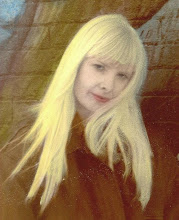
Barbara Stanwyck (July 16, 1907 – January 20, 1990) was an American actress, a film and television star, known during her 60-year career as a consummate and versatile professional with a strong screen presence, and a favorite of directors including Cecil B. DeMille, Fritz Lang and Frank Capra. After a short stint as a stage actress, she made 85 films in 38 years in Hollywood, before turning to television.
Stanwyck was nominated for the Academy Award four times, and won three Emmy Awards and a Golden Globe. She was the recipient of honorary lifetime awards from the Motion Picture Academy, the Film Society of Lincoln Center, the Golden Globes, the Los Angeles Film Critics Association, and the Screen Actors Guild, has a star on the Hollywood Walk of Fame and is ranked as the eleventh greatest female star of all time by the American Film Institute.
Stanwyck's first sound film was The Locked Door (1928), followed by Mexicali Rose in 1929. Neither film was successful; nonetheless, Frank Capra chose Stanwyck for his Ladies of Leisure (1930). Numerous memorable roles followed, among them the self-sacrificing mother in Stella Dallas (1937), the con artist who falls for her would-be victim (played by Henry Fonda) in The Lady Eve (1941), the woman who talks an infatuated insurance salesman (Fred McMurray) into killing her husband in Double Indemnity (1944), and the doomed shrewish wife in Sorry, Wrong Number (1948). Stanwyck was one of the actresses considered for the role of Scarlett O'Hara in Gone With The Wind (1939), although she wasn't given a screen test. In 1944, Stanwyck was the highest-paid woman in the United States.
Pauline Kael described Stanwyck's acting, "[she] seems to have an intuitive understanding of the fluid physical movements that work best on camera" and in reference to her early 1930s film work "early talkies sentimentality ... only emphasizes Stanwyck's remarkable modernism."
Stanwyck was known for her accessibility and kindness to the backstage crew on any film set. She knew the names of their wives and children, and asked after them by name. Frank Capra said she was "destined to be beloved by all directors, actors, crews and extras. In a Hollywood popularity contest she would win first prize hands down."
When Stanwyck's film career declined in 1957, she moved to television. Her 1961–1962 series The Barbara Stanwyck Show was not a ratings success but earned her first Emmy Award. The 1965–1969 Western series The Big Valley on ABC made her one of the most popular actresses on television, winning her another Emmy. She was billed as "Miss Barbara Stanwyck," and her role as head of a frontier family was likened to that of Ben Cartwright, played by Lorne Greene in series Bonanza. Stanwyck's costars included Richard Long (who had been in Stanwyck's 1953 film All I Desire), Peter Breck, Linda Evans, and Lee Majors.
Years later, Stanwyck earned her third Emmy for The Thorn Birds. In 1985, she made three guest appearances on the hit primetime soap opera Dynasty prior to the launch of its ill-fated spin-off series The Colbys in which she starred alongside Charlton Heston, Stephanie Beacham and Katharine Ross. Disappointed with the experience, Stanwyck remained with the series for only one season (it lasted for two), and her role as Constance Colby Patterson would prove to be her last. Earl Hamner Jr. (producer of The Waltons) had initially wanted Stanwyck for the lead role of Angela Channing on the successful 1980s soap opera, Falcon Crest, but she turned it down.
William Holden credited her with saving his career when they co-starred in Golden Boy (1939). They remained lifelong friends. When Stanwyck and Holden were presenting the Best Sound Oscar, Holden paused to pay a special tribute to Stanwyck. Shortly after Holden's death, Stanwyck returned the favor upon receiving her honorary Oscar, she said with an emotion "tonight my golden boy you got your wish".
Her first husband was actor Frank Fay. They were married on August 26, 1928. On December 5, 1932, they adopted a son, Dion Anthony "Tony" Fay, who was one month old. (He and Stanwyck eventually became estranged.) The marriage was a troubled one; Fay's successful career on Broadway did not translate to the big screen, whereas Stanwyck achieved Hollywood stardom, after a bumpy start. Also, Fay reportedly did not shy away from physical confrontations with his young wife, especially when he was inebriated. Some film historians claim that the marriage was the basis for A Star is Born. The couple divorced on December 30, 1935.
In 1936, while making the film His Brother's Wife, Stanwyck met and fell in love with her co-star, Robert Taylor. Following a whirlwind romance, the couple began living together. Their 1939 marriage was arranged with the help of Taylor's studio MGM, a common practice in Hollywood's golden age. She and Taylor enjoyed time together outdoors during the early years of their marriage, and were the proud owners of many acres of prime West Los Angeles property. Their large ranch and home in the Mandeville Canyon section of Brentwood in Los Angeles is to this day referred to by locals as the old "Robert Taylor ranch".

Taylor had several affairs during the marriage, including one with Ava Gardner. Stanwyck was rumored to have attempted suicide when she learned of Taylor's fling with Lana Turner. She ultimately filed for divorce in 1950 when a starlet made Turner's romance with Taylor public. The decree was granted on February 21, 1951. After the divorce, they acted together in Stanwyck's last feature film The Night Walker (1964). Stanwyck was reportedly devastated when many of his old letters and photos were lost in a house fire. She never remarried, collecting alimony of 15 percent of Taylor's salary until his death in 1969.
Stanwyck had an affair with actor Robert Wagner, whom she met on the set of Titanic. Wagner, who was 22 years old, and Stanwyck, who was 45 at the beginning of the affair, enjoyed a four-year romance, as described in Wagner's 2008 memoir, Pieces of My Heart. Stanwyck eventually broke off the relationship.
[edit] Later years and death
Stanwyck's retirement years were active, with charity work done completely out of the limelight. Her decline started following a robbery and beating at her Beverly Hills home in 1981.
Barbara Stanwyck died of congestive heart failure, emphysema and chronic obstructive lung disease at St. John's Hospital, in Santa Monica, California, in 1990. She was 82. Her body was cremated, and her ashes scattered in Lone Pine, California.




No comments:
Post a Comment